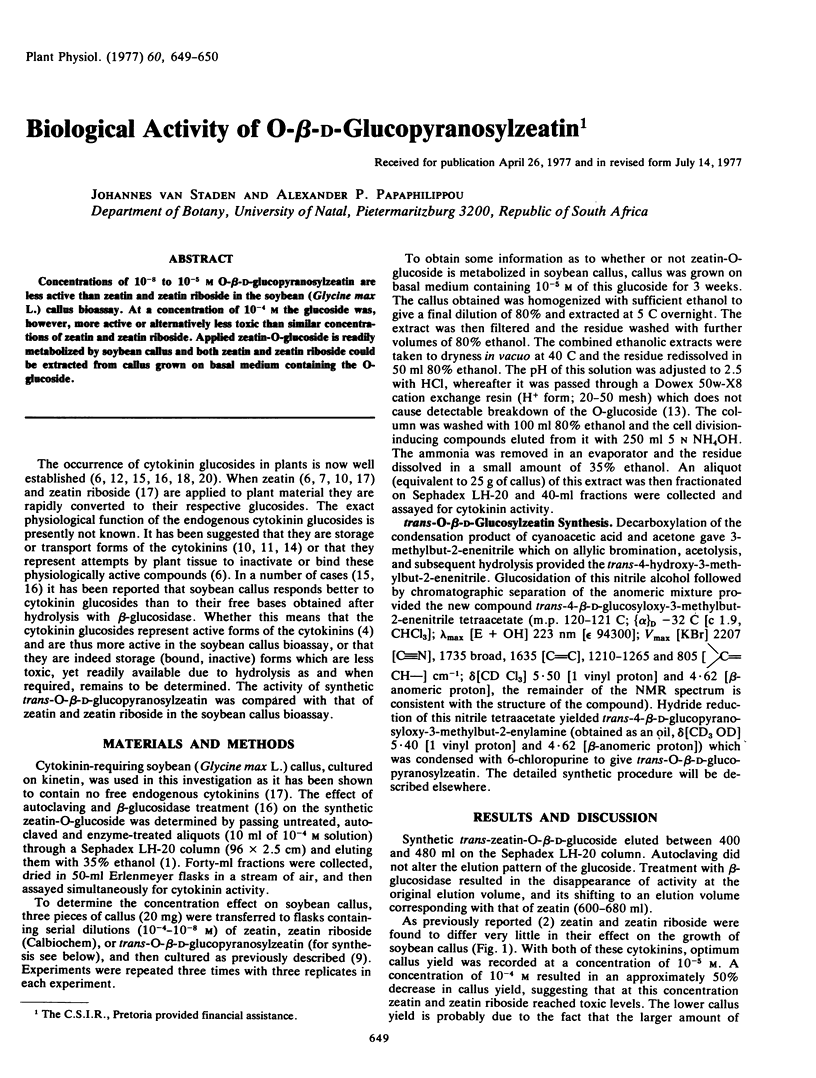Abstract
Concentrations of 10−8 to 10−5m O-β-d-glucopyranosylzeatin are less active than zeatin and zeatin riboside in the soybean (Glycine max L.) callus bioassay. At a concentration of 10−4m the glucoside was, however, more active or alternatively less toxic than similar concentrations of zeatin and zeatin riboside. Applied zeatin-O-glucoside is readily metabolized by soybean callus and both zeatin and zeatin riboside could be extracted from callus grown on basal medium containing the O-glucoside.
Full text
PDF

Selected References
These references are in PubMed. This may not be the complete list of references from this article.
- Armstrong D. J., Burrows W. J., Evans P. K., Skoog F. Isolation of cytokinins from tRNA. Biochem Biophys Res Commun. 1969 Oct 22;37(3):451–456. doi: 10.1016/0006-291x(69)90936-x. [DOI] [PubMed] [Google Scholar]
- Fox J. E., Cornette J., Deleuze G., Dyson W., Giersak C., Niu P., Zapata J., McChesney J. The formation, isolation, and biological activity of a cytokinin 7-glucoside. Plant Physiol. 1973 Dec;52(6):627–632. doi: 10.1104/pp.52.6.627. [DOI] [PMC free article] [PubMed] [Google Scholar]
- Horgan R. A new cytokinin metabolite. Biochem Biophys Res Commun. 1975 Jul 8;65(1):358–363. doi: 10.1016/s0006-291x(75)80101-x. [DOI] [PubMed] [Google Scholar]
- Miller C. O. Evidence for the natural occurrence of zeatin and derivatives: compounds from maize which promote cell division. Proc Natl Acad Sci U S A. 1965 Oct;54(4):1052–1058. doi: 10.1073/pnas.54.4.1052. [DOI] [PMC free article] [PubMed] [Google Scholar]


